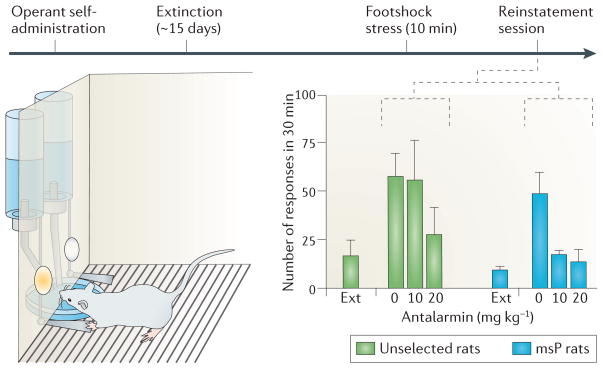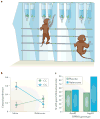
| PMC full text: | Nat Rev Neurosci. Author manuscript; available in PMC 2012 Jul 30. Published in final edited form as: |
Figure 5

In the stress-induced relapse model, animals are first trained to establish operant self-administration of alcohol. Once stable self-administration rates are achieved, this behaviour is extinguished by removing alcohol as reinforcer, after which lever-pressing rates decline to low levels over the course of about 2 weeks (Ext). Exposure to a stressor — a 10 minute footshock — reinstates response rates on the previously alcohol-reinforced lever, even though alcohol continues to be absent. Antalarmin, a corticotropin-releasing factor receptor 1 (CRF1) antagonist, blocks stress-induced relapse-like behaviour in Marchigian-Sardinian alcohol-preferring (msP) rats at doses that are ineffective in rats that are not selected for high alcohol preference. This shows that the CRF1 receptor is crucial for stress-induced relapse, and that the activity of the CRF system is higher in msP rats compared to non-preferring rats. Figure is reproduced, with permission, from REF. 93 © (2006) National Academy of Sciences.




